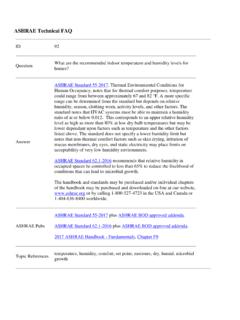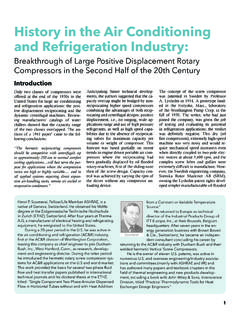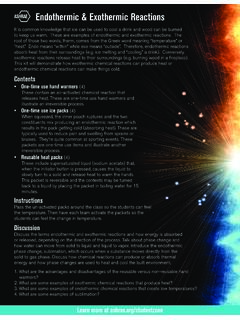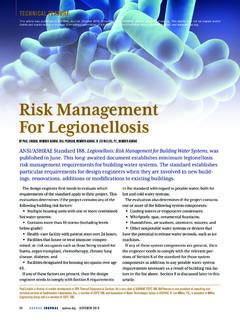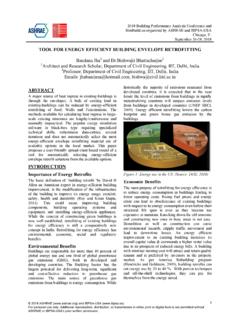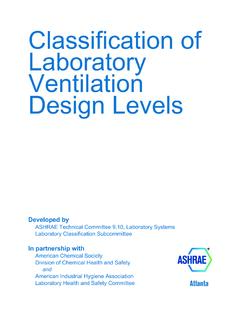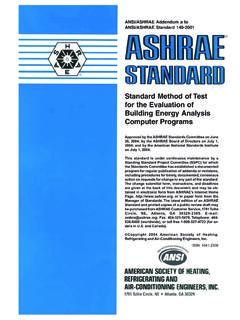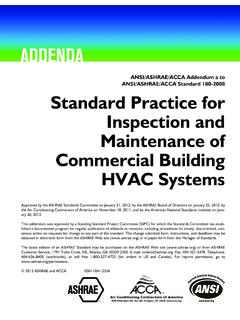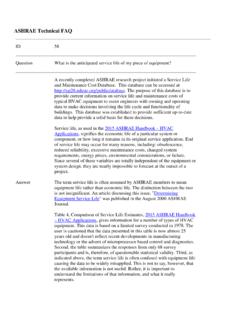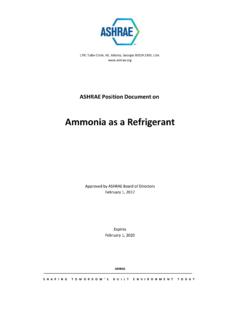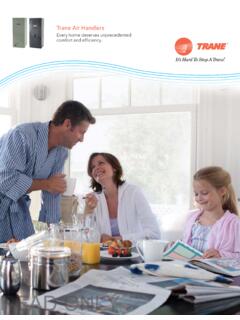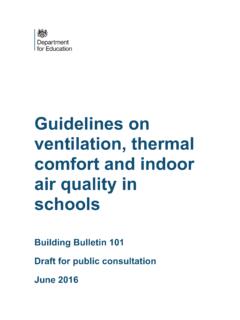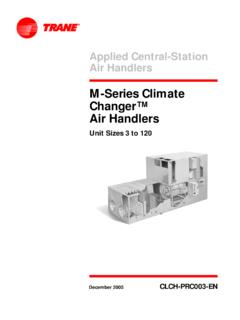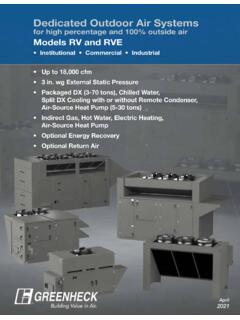Transcription of Engineers, Inc. Posted at www.ashrae.org. For more ...
1 May 2010 ASHRAE Journal 75 Using ASHRAE s New IAQ GuideBy Andrew Persily, , Fellow ASHRAE; and Martha Hewett, Member ASHRAEs was seen in the 1970s, ill-conceived approaches to in-crease energy efficiency can degrade indoor air quality (IAQ), and today s focus on net zero energy buildings must neither repeat the mistakes of the past nor create new ones. Many discussions of sustainable building focus primarily on energy use, but the quality of the indoor environment and its impact on occupant health, satisfaction and performance also must be considered for any building to be a sustainable contribution to the built environment over the long has traditionally been addressed through minimum ventilation require-ments in building codes, which have been based on industry consensus standards such as ASHRAE Standard While this approach has helped to improve IAQ in buildings, good IAQ requires more than just the minimum ventilation rates.
2 Over the years many important contri-butions have been made directed toward improving IAQ in buildings, including Standard and other ,2 In addition, ASHRAE, the International Society for indoor Air quality and Climate (ISIAQ) and other organizations have held conferences that have advanced knowl-edge and practice related to IAQ. While these efforts have been valuable, the building community still lacked a comprehensive and practical resource on achieving good IAQ for the building professionals who design, construct and commission buildings. To meet this long-standing need, ASHRAE teamed with several key organizations* to develop the newly published indoor Air quality Guide: Best Practices for Design, Construction and Commissioning.
3 This article presents a short summary of the guide, including its development, format and on the Guide s DevelopmentThe initial idea for the IAQ Guide can be traced back to the development of Standard The committee was directed in 1997 to write the standard in mandatory and enforceable language to facilitate its adoption and reference by building codes. That direction implied that the standard would contain only minimum requirements. As a result, it could not contain a wide range of potentially useful material such as background information, case studies, or discussion of design approaches and technologies that could improve IAQ but which are not appropriate for minimum requirements for all buildings.
4 The Standard Project Committee proposed to provide that additional information through a companion guideline to the standard but the standard so fully consumed their time that they were unable to move the guideline forward quickly. ASHRAE found a way to meet this need in 2006 for a comprehensive and practical IAQ resource. The Society entered into a cooperative agreement with the En-vironmental Protection Agency to develop a guidance document and educational program to assist building professionals in designing and constructing buildings with improved IAQ. Building on the positive experience with the Advanced Energy Design Guides, ASHRAE sought to bring other key organizations in the building community into the IAQ effort, and developed collaborative agreements with the American Institute of Architects, BOMA International, Sheet Metal and Air-Conditioning Contractors National Association, and the Green Building Council in addition to the Environ-mental Protection Agency.
5 These organizations first met in December 2006 to begin defining the scope of the guide and the process by which it would be of the first steps in developing the guide was to as-semble a project committee of experts in the field of IAQ and building design, construction, and commissioning to write the document. This group started meeting in spring 2007 and worked for more than two years to complete the document. Two focus groups of architects, engineers, building owners, and sustainable building specialists reviewed early outlines and provided input on what they have found most useful in other design guides. Two peer reviews of drafts of the guide also provided input from many reviewers that helped to shape the final document.
6 *American Institute of Architects, BOMA International, Sheet Metal and Air-Conditioning Contractors National Association, Green Building Council, and Environmental Protection Agency AAmerican Society of Heating, Refrigerating and Air-Conditioning EngineersThe American Institute of ArchitectsBuilding Owners and Managers Association InternationalSheet Metal and Air Conditioning Contractors National Environmental Protection Green Building CouncilIndoor Air quality GuideBest Practices for Design, Construction, and CommissioningDeveloped article was published in ASHRAE Journal, May 2010. Copyright 2010 American Society of Heating, Refrigerating and Air-Conditioning Engineers, Inc.
7 Posted at For more information about ASHRAE Journal, visit ASHRAE Journal May 2010 The summary guidance portion of the IAQ Guide, shown here for the strategy on pests, provides an overview (upper left) that describes why each strategy is important, how to determine whether it needs to be considered in a particular project, and the general nature of the solutions. It also provides a case study for each strategy (gray box) that illustrates how this strategy can be applied. In addition, it contains tabular and graphical guides (green box on upper left page and graphic on upper right page) which, on the companion CD, link to over 500 pages of more detailed guidance useful in later phases of design and construction.
8 The pest control section of the CD, for example, contains 17 additional pages of specific design and construction guidance, including 15 additional photos, tables and graphics, and further / indoor AIR quality GUIDEI ntroductionPest Prevention Goals and ObjectivesPests of ConcernPest Entry PointsPest Dispersal Throughout BuildingPest Access to Food and Water ResourcesAreas of Potential Pest HarborageAccess for Maintenance and Pest Control ActivitiesAppropriate Materials Selection for Sealing Supplemental Pesticide UseConstruction Site ManagementReferencesBuildings may experience infestations from a variety of creatures. These include an assortment of mammals, insects and arthropods, rodents, birds, and fungi.
9 These creatures can bring about both infectious diseases and allergic reactions in occupants, produce unpleasant noise or odors, cause emotional distress to occupants, damage the building fabric, or bring about the use of pesticides, which results in pesticide exposure to building occupants. Preventing and controlling infestations is therefore of paramount importance. Architecture plays a key role [in infestation prevention and control] because design features alone may provide exterior shelter for and/or allow access by pests to interiors (Franz 1988, p. 260). Building managers report that many new buildings with innovative, energy-efficient designs have pest problems that could have been reduced or avoided with better planning at the design and build stage (PCT 2008; Merchant 2009).
10 In addition, landscape design, construction errors, and poor construction site management can increase the risk of pest colonization of a new building after is possible to design and construct buildings that are resistant to colonization by pests. All colonizing organisms need a point of entry to the building; sources of food and water within or near the building; protected locations where they can eat, rest, and find a mate (called harborage); and passages that allow them to safely move among entry, food, water, and harborage areas. Left to their own devices, a population of colonizing organisms will expand until it comes to equilibrium with the available food, water, and harborage.
